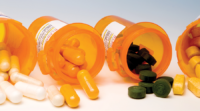An independent community pharmacy—let’s call it Joe’s Pharmacy—closed its doors because it lacked the cash necessary to pay its expenses and invest in new opportunities.
If Joe’s Pharmacy would have focused on improving its cash flow—rather than fixating on its profitability—the pharmacy might still have been in business.
Don’t be like Joe’s Pharmacy. Even if it’s a hypothetical example, it’s an all too real situation.
In part one of our crash course on cash flow, we explained the difference between cash flow and profitability. In this next installment, we’re giving you practical tips to better manage your pharmacy’s cash flow.
Know how to calculate cash flow
You need to understand how and where the cash flows in and out of your business.
Once you know how to calculate cash flow, you can take steps to improve it.
With a few simple formulas, you can determine the fundamental elements that affect cash flow day-to-day and month-to-month for your pharmacy.
 Proven Strategies Guaranteed to Boost Pharmacy Cash Flow (+Advanced Formulas)
Proven Strategies Guaranteed to Boost Pharmacy Cash Flow (+Advanced Formulas)
These little-known strategies and advanced formulas will free up cash and grow your pharmacy. Read the article.
Perform a risk analysis for your business
When running an independent community pharmacy, you encounter risks, such as market pressures and unexpected events. And those risks can affect your cash flow.
Future-proof your business by performing a risk-analysis that includes cash flow forecasting.
Consider a few hypothetical scenarios that would put your business in a cash flow bind, such as:
- Receiving reimbursements for certain prescription sales takes longer than anticipated
- Facing high direct and indirect remuneration (DIR) fees
- Encountering an unexpected problem, such as a leaky roof
If you consider how these risks could influence your cash flow in advance, you can be prepared.
Get a better cost of goods
Getting a good deal on your primary wholesaler contract can maximize your profitability and improve your cash flow.
A good wholesaler contract—and better cost of goods—means less money going out. Which means more cash in the bank.
Saving money starts with purchasing better. And when you want to improve your purchasing, negotiation is crucial.
ProfitGuard by PBA Health is a service that manages primary wholesaler negotiations to get pharmacies the best overall cost of inventory. The contract negotiation experts with ProfitGuard work to secure independent community pharmacies with better pricing, rebates and payment terms on their primary wholesaler contracts. It’s a service worth looking into if you want to boost your cash flow.
Improve your inventory management
Inventory is key to driving cash flow and profitability.
Poor inventory management can mean lost sales and often translates to too little cash. When most of your cash is tied up in inventory, you have less money in the bank. And if you’re wasting shelf space on slow-moving products rather than focusing on best-sellers, you may be missing out on additional sales.
Improve your inventory management by always knowing your inventory levels. Get rid of excess safety stock and outdated products, and focus on fast-moving products to increase cash flow.
It’s also important to select the right wholesaler to help you manage your inventory. Some wholesalers offer robust inventory management systems that allow you to spend less time managing inventory levels and more time caring for patients.
Monitor your reimbursements
Payments from third party payers are a huge part of your business. If you don’t receive the reimbursements due to you from third party payers, your cash flow will suffer.
Consistently—and accurately—reconcile your third party claims so you know if you’re missing payments or if there are discrepancies.
Hire an accountant who specializes in pharmacy accounting or an electronic reconciliation service to help you with claims reconciliation.
Focus on cash flow—not profit
If you constantly struggle to pay your bills, your profitability isn’t going to matter.
Without access to cash, you won’t be able to invest in new opportunities or cover your operating expenses. You might even have to close your doors.
Focus on consistently maintaining a positive cash flow and profitability will follow.
Establish a line of credit
Taking out a line of credit can help cover your expenses, such as payroll, rent and utilities. It provides short-term, low-cost funds to meet your day-to-day business expenses when your cash flow isn’t sufficient.
And, a line of credit can be an effective way to pay your wholesaler faster, which can help you negotiate a better contract when the time comes.
Maintain a good working relationship with your bank, and establish a line of credit before you need it to avoid being turned away.
Now you know how to manage—and improve—your cash flow. Stay tuned for our next article in this crash course on cash flow to learn about common cash flow mistakes.
Get more business tips and advice for independent pharmacies. Sign up for our e-newsletter.


 Proven Strategies Guaranteed to Boost Pharmacy Cash Flow (+Advanced Formulas)
Proven Strategies Guaranteed to Boost Pharmacy Cash Flow (+Advanced Formulas)









